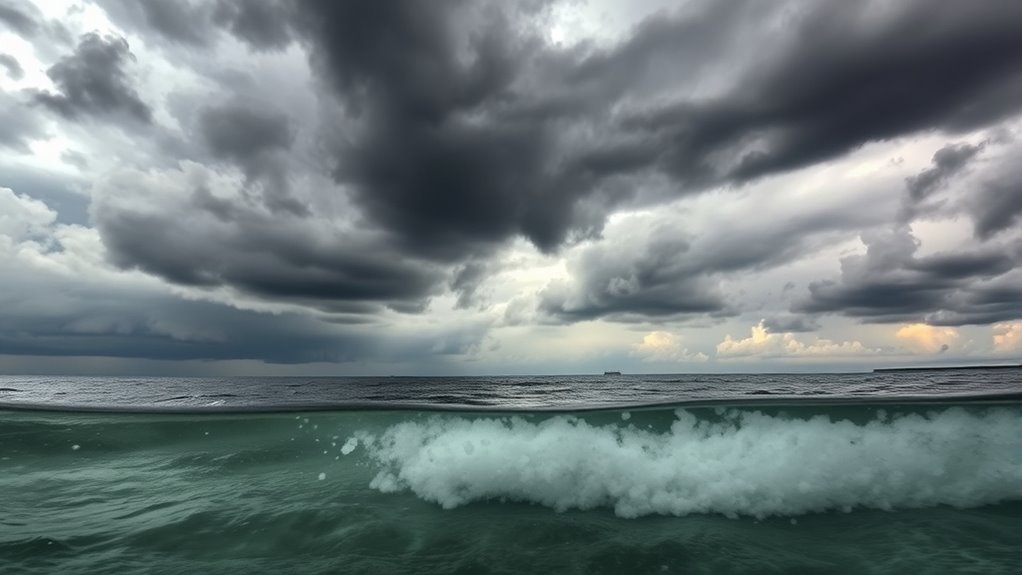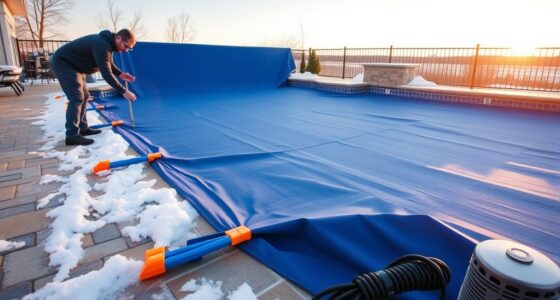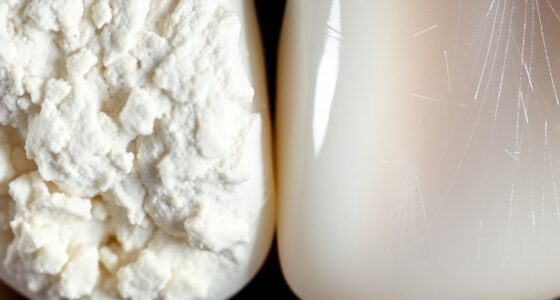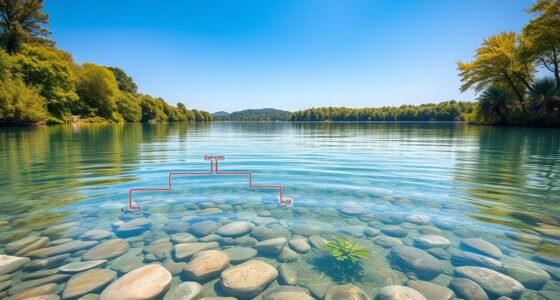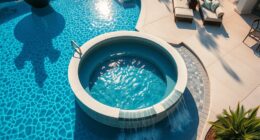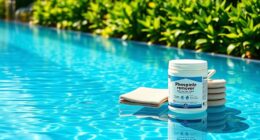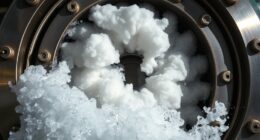After shocking your pool, cloudiness happens because tiny particles and chemical byproducts are suspended in the water. Clarifiers help by gathering these particles into larger flocs that speed up filtration, making your water clearer over time. Flocculants cause faster settling of the particles, but they require manual removal of debris. Choosing between them depends on how severe the cloudiness is and your maintenance preference; more details follow if you’re ready to get your water crystal clear.
Key Takeaways
- Use clarifiers for routine, mild cloudiness after 24 hours; opt for flocculants for severe or stubborn haze.
- Clarifiers are easier to apply and require less manual removal, ideal for ongoing maintenance.
- Flocculants cause faster settling of fine particles but need manual removal of debris.
- Proper chemical dosing, even distribution, and patience are essential for effective results with either method.
- Regular testing, cleaning filters, and maintaining water balance prevent future cloudiness after treatment.
Understanding the Causes of Cloudiness After Shocking
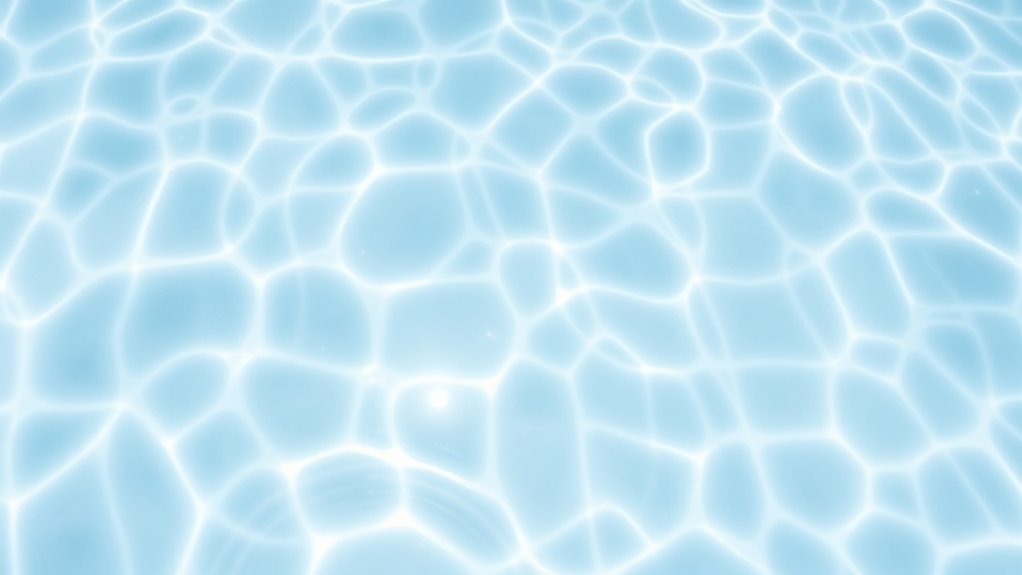
When your body experiences a shocking event, such as a sudden injury or intense trauma, it can trigger a series of physiological responses that lead to cloudiness or confusion. Similarly, after shocking your pool, your water may turn cloudy. This cloudiness happens because shocking introduces a high dose of chlorine or other chemicals, which react with organic contaminants, bacteria, and debris. These reactions create particles that are too small to settle quickly, causing the water to appear hazy. Additionally, the shock oxidizes organic matter, producing byproducts that can contribute to cloudiness. Sometimes, the disturbance of the water’s chemistry, combined with excess chlorine, overwhelms the filtration process, making the water appear murky. Understanding these causes helps you recognize that cloudiness isn’t unusual and can be addressed effectively. Proper chemical balance is essential to prevent prolonged cloudiness and maintain clear pool water.
How Clarifiers Work to Clear Up Your Pool
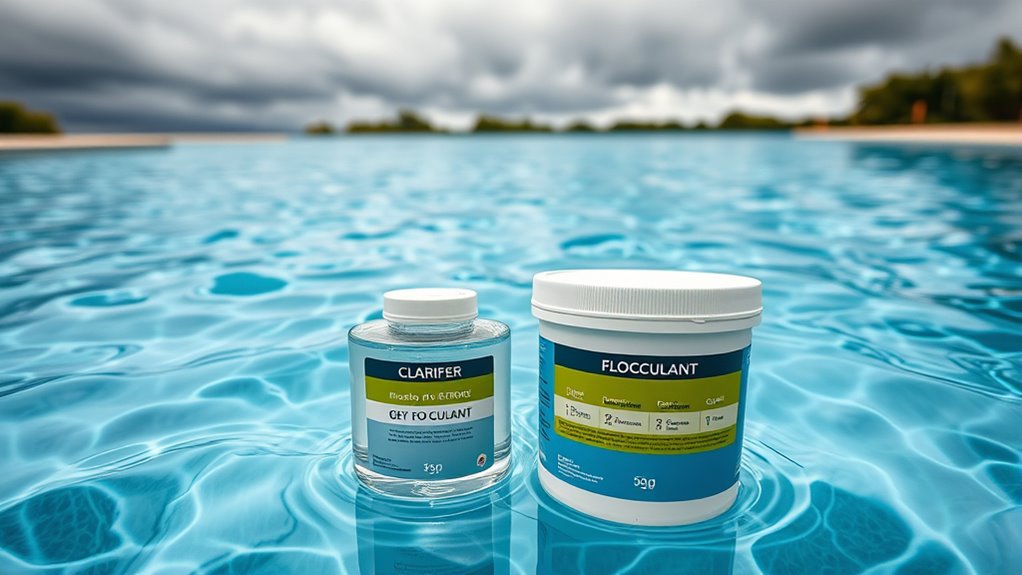
After understanding what causes cloudiness in your pool following shocking, you might wonder how to clear it up efficiently. Clarifiers work by gathering tiny particles that cause cloudiness into larger clumps called flocs. These flocs are heavy enough to sink to the bottom of your pool. Once settled, you can vacuum them out or let your filtration system remove them. Unlike flocculants, clarifiers don’t require you to manually remove the particles immediately; they simply speed up the natural filtration process. When you add a clarifier, it spreads throughout your pool, bonding with the suspended particles. Over time, these particles clump together, making it easier for your filter to trap them. This process results in clearer water without the need for intensive manual removal. Incorporating professional equipment can further improve the effectiveness of the clearing process.
The Mechanism Behind Flocculants and Their Effectiveness
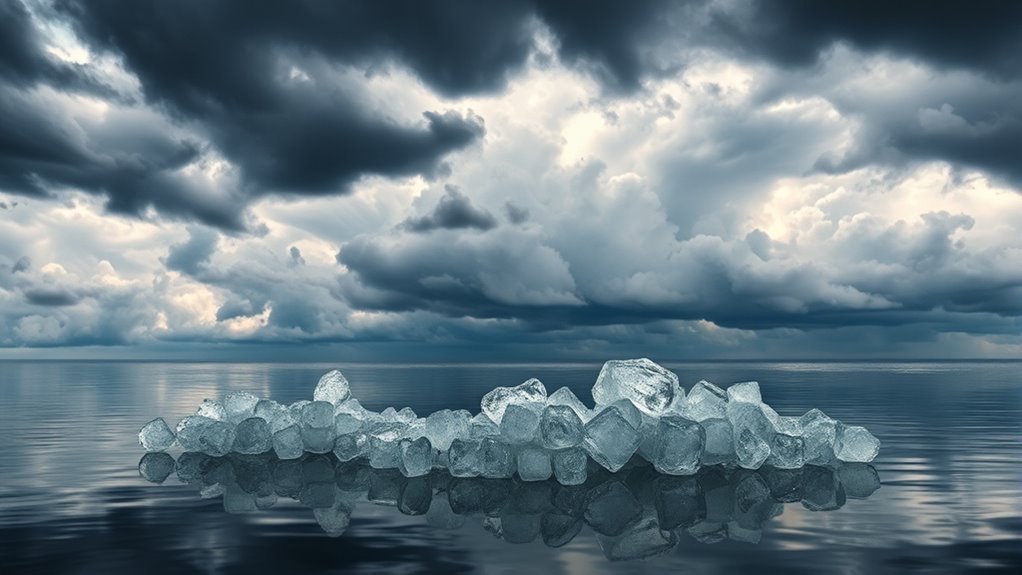
Flocculants work by causing tiny particles in your pool water to clump together, making them easier to remove. Their effectiveness depends on factors like water pH, temperature, and the type of particles present. Understanding these points helps you choose the right flocculant and improve your pool’s clarity.
How Flocculants Work
Flocculants work by destabilizing and aggregating suspended particles in water, making it easier to remove impurities. They do this by neutralizing the electrical charges on particles, which normally repel each other. Once charges are neutralized, particles can stick together, forming larger clumps called flocs. These flocs are heavy enough to settle out of the water more quickly. The type of flocculant you use determines how effectively these particles clump together. Typically, they are either based on aluminum or polymer compounds, which work differently in the water. As the flocs grow, they become visible and can be easily separated through settling or filtration. This process improves water clarity and reduces the load of suspended solids, making treatment more efficient. Additionally, understanding the high contrast ratios of projectors can help optimize image quality, much like how effective flocculation enhances water clarity.
Factors Influencing Effectiveness
Several factors influence how effectively flocculants work, with water chemistry and operational conditions playing essential roles. The pH level of your water affects flocculant performance; too acidic or alkaline can reduce their ability to bind particles. Temperature also matters—colder water slows chemical reactions, making flocculation less efficient. The type and concentration of suspended solids impact how well the flocculant can aggregate particles; high levels may require higher doses. Mixing speed and duration are critical—insufficient mixing prevents particles from colliding, while over-mixing can break apart flocs. Additionally, the specific formulation of the flocculant, such as its charge and molecular weight, determines its effectiveness with your water’s unique composition. Advances in AI detection methods improve accuracy, ensuring better monitoring of water quality and treatment efficacy. Adjusting these factors ensures ideal clarity and treatment results.
When to Use a Clarifier After Shocking
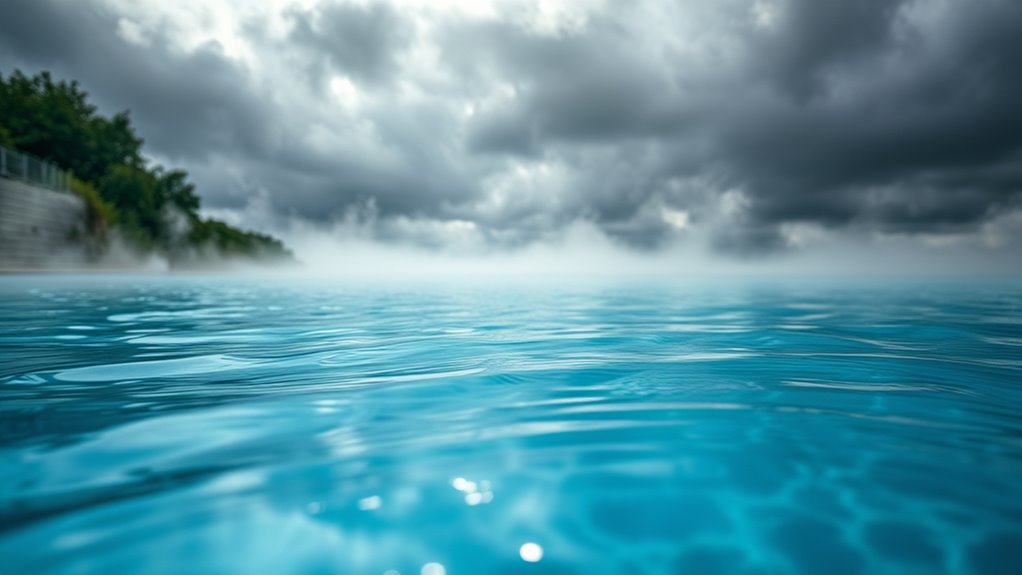
After shocking your pool, it’s important to wait until the water clears before adding a clarifier. You should use a clarifier when the water remains cloudy but the shock has done its job of breaking down contaminants. If your water is still murky after 24 hours, a clarifier can help gather tiny particles for easier removal. Visualize your pool’s clarity:
| Cloudiness Level | Clarifier Use? | Timing |
|---|---|---|
| Slight | Yes | After 24 hours |
| Moderate | Yes | When particles settle |
| Heavy | No | Wait longer or floc |
| Persistent | Yes | After thorough filtration |
| Clear | No | No need for clarifier |
Use a clarifier when the water is hazy but not fully clear, ensuring effective cleaning without overusing chemicals.
Situations That Call for Flocculants Post-Shock
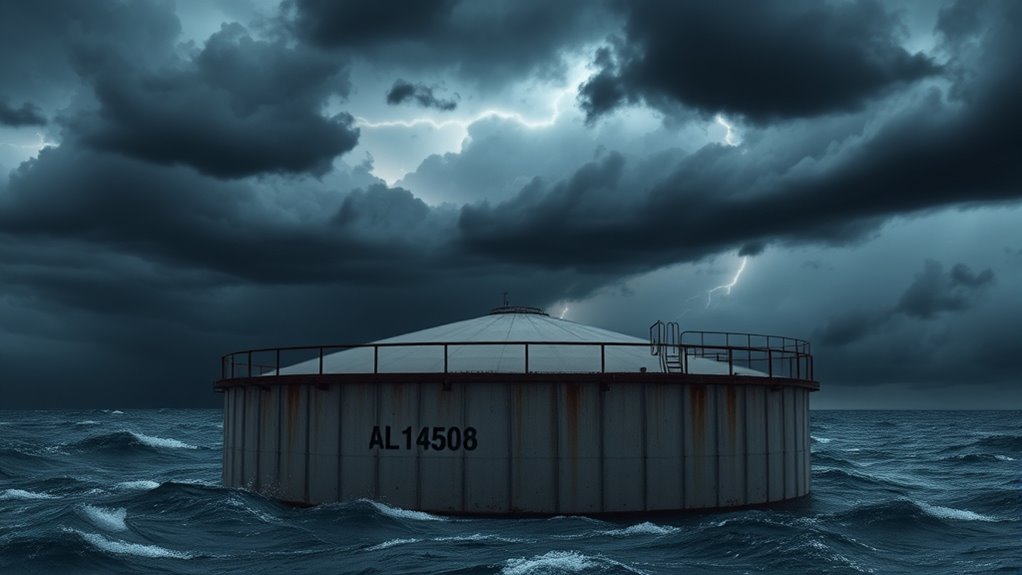
When your pool remains extremely cloudy despite multiple rounds of filtering and clarifying agents, flocculants become necessary. You might need them if you notice:
- Persistent cloudiness that won’t clear despite your best efforts, leaving you frustrated and worried about water safety.
- Large debris or particles settled at the bottom that refuse to be filtered out, making it hard to enjoy your pool.
- After a severe shock treatment, when the water looks hazy or milky, indicating that particles are too fine for standard filtration.
- Using refrigerants with low-GWP can sometimes contribute to better overall water clarity and environmental impact, especially when considering the efficiency of your pool filtration system.
In these situations, flocculants work by clumping tiny particles into larger masses, which then settle quickly, restoring clarity and giving you peace of mind.
Comparing the Pros and Cons of Clarifiers and Flocculants
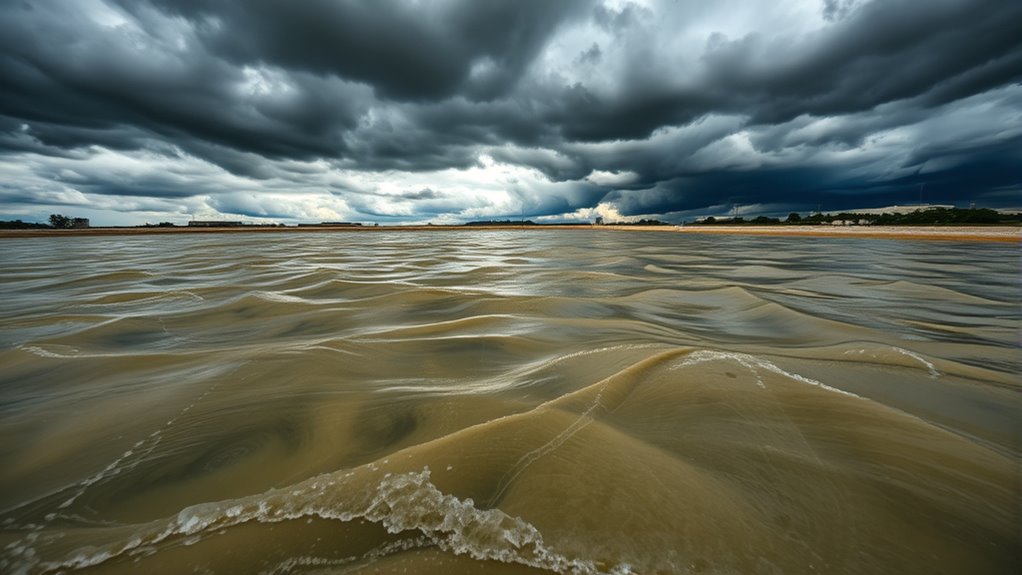
Clarifiers and flocculants are both effective tools for achieving clear pool water, but they serve different purposes and have distinct advantages and disadvantages. Clarifiers work by gathering tiny particles into larger clumps, making them easier to filter out. They’re simple to use and ideal for routine maintenance. However, they may take longer to clear water and might not handle heavy contamination well. Flocculants, on the other hand, rapidly cause particles to settle at the bottom, allowing for quick vacuuming. They’re powerful for severe cloudiness but require more effort, including manual removal and potential backwashing. Clarifiers are less messy and gentler on your equipment, while flocculants can sometimes cause filter clogging if not used properly. Your choice depends on the severity of cloudiness and your maintenance preferences. Understanding the differences in their mechanisms can help you make an informed decision.
Step-by-Step Guide to Applying Clarifiers and Flocculants
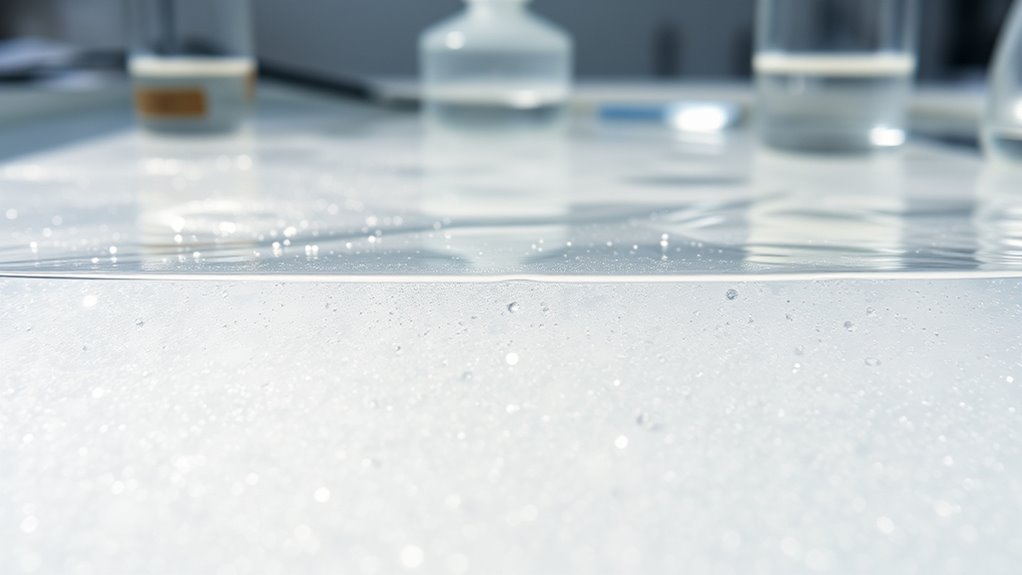
To get the best results, you need to follow proper application techniques when using clarifiers and flocculants. Keep a close eye on the water’s response and be ready to make adjustments as needed. This way, you guarantee the water clears efficiently and stays balanced. Monitoring water quality during the process can help identify any signs of imbalance early on.
Proper Application Techniques
Applying clarifiers and flocculants correctly is essential for achieving clear, sparkling water. To do this effectively, follow these steps:
- Measure the correct dosage based on your pool’s size and manufacturer’s instructions. Over-application can cause cloudiness, while under-application won’t work.
- Distribute the chemical evenly across the water surface, avoiding direct contact with the skimmer or filter inlet.
- Wait patiently for the chemicals to do their job—usually 24 to 48 hours—without disturbing the water or running the pump unnecessarily.
- Consider understanding the differences between clarifiers and flocculants and their optimal use cases to enhance your pool maintenance strategy.
This careful approach ensures the particles bind and settle properly. Proper application maximizes the clarifier or flocculant’s effectiveness, giving you crystal-clear water you’ll love to swim in.
Monitoring and Adjustments
Monitoring your pool after adding clarifiers or flocculants is essential to guarantee the chemicals are working effectively. Regular checks let you see how the water responds and if adjustments are needed. Watch for changes in clarity, debris settling, and water movement. Use this table to guide your monitoring process:
| Observation | Action Needed | Timing |
|---|---|---|
| Cloudiness persists | Add more clarifier or flocculant | After 24 hours |
| Debris settles quickly | Remove settled debris | Every few hours |
| Water remains murky | Test chemical balance | Daily |
| Particles don’t settle | Increase settling time | 48 hours or more |
| Clear water achieved | Perform regular maintenance | Weekly |
Adjust your approach based on these observations to keep your pool crystal clear.
Tips for Maintaining Crystal-Clear Pool Water After Treatment
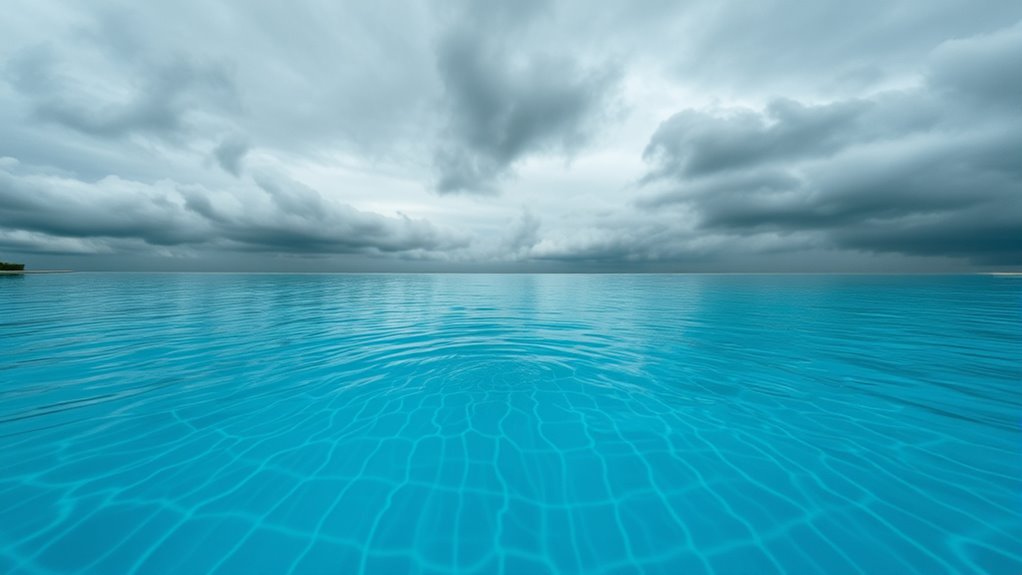
Even after treatment, maintaining crystal-clear pool water requires consistent effort. To keep your pool inviting, focus on these key tips:
- Regularly test and balance your water—pH, alkalinity, and sanitizer levels—so harmful bacteria and algae don’t take hold.
- Clean your filter frequently—a dirty filter can reintroduce cloudiness and debris back into your pool.
- Maintain proper circulation—run your pump long enough daily to evenly distribute chemicals and prevent stagnation.
Staying vigilant with these steps ensures your pool remains sparkling. Don’t let cloudy water dampen your enjoyment—consistent care keeps your oasis pristine and inviting all season long.
Frequently Asked Questions
Can I Use Clarifiers and Flocculants Together?
Yes, you can use clarifiers and flocculants together, but it’s important to follow the manufacturer’s instructions. Clarifiers work by attracting tiny particles, helping them clump together, while flocculants form larger clumps that settle faster. Using both can improve water clarity, especially after shocking. Just make certain you don’t overuse them, as excess chemicals can cause cloudiness or other issues. Always test your water and adjust accordingly.
How Long Should I Wait After Shocking Before Adding Chemicals?
Waiting at least 24 hours after shocking your pool is essential, or you might face a crystal-clear nightmare. During this time, your chlorine levels will drop, and chemicals will stabilize, ensuring the shock has fully dispersed. Avoid adding other chemicals too soon, as they can react unpredictably. Give your pool enough time to calm down and balance out, so when you do add chemicals, they work effectively and keep your water sparkling.
Are There Any Pool Types Incompatible With These Treatments?
Some pool types, like vinyl liners or plaster surfaces, can be sensitive to certain clarifiers and flocculants. You should check your product’s instructions to guarantee compatibility. For example, some chemicals might damage delicate surfaces or alter pH levels. Always perform a test on a small area or consult your pool manufacturer’s guidelines before using these treatments. Properly selecting the right chemicals helps prevent damage and keeps your pool safe and clean.
What Are the Signs That My Pool Needs Clarifier or Flocculant?
Did you know that over 60% of pool owners face cloudy water at some point? If your pool looks hazy, has a layer of dirt at the bottom, or the water feels slimy, it’s time for clarifier or flocculant. Clarifier works best for minor cloudiness, while flocculant quickly sinks heavy particles. Watch for these signs, and choose the right treatment to restore your pool’s sparkle effortlessly.
Is It Safe to Swim Immediately After Applying Clarifiers or Flocculants?
You shouldn’t swim immediately after applying clarifiers or flocculants. These chemicals need time to work and settle the particles in your pool. Usually, you should wait at least 24 hours and run your filter continuously to clear the water. Before swimming, verify the water is clear and free of residue, and test the water chemistry to confirm it’s safe. Always follow the product instructions for best results.
Conclusion
Now that you understand the dance between clarifiers and flocculants, you’re equipped to tame your pool’s cloudy days. Think of these treatments as your pool’s personal spa therapists—invigorating, restoring, and bringing back that sparkling clarity. With the right choice and timing, you’ll turn your murky waters into a crystal-clear oasis, inviting you to plunge in and enjoy every revitalizing moment. Your perfect pool paradise is just a treatment away—plunge into the clarity!
